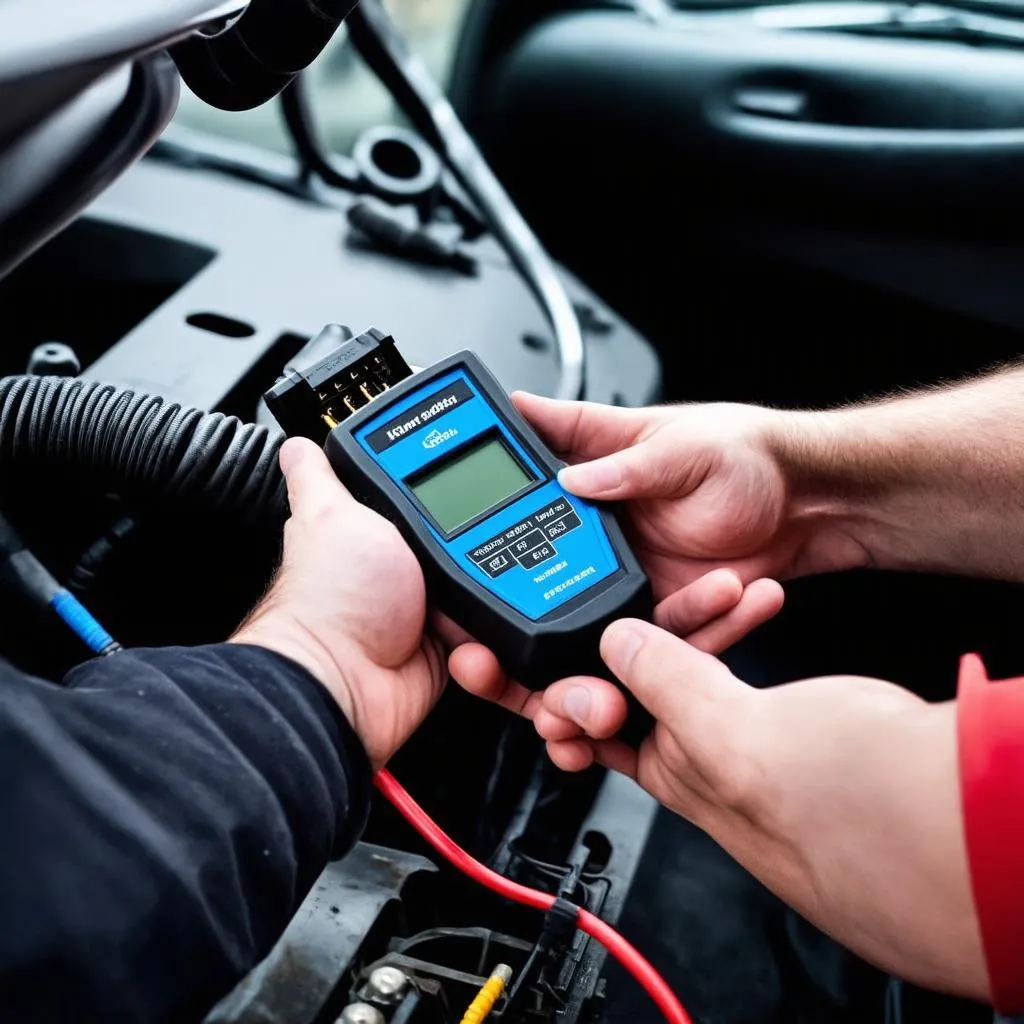“Check engine light staring you down again?” That familiar feeling of dread might hit a little different when you’re driving an older Toyota. We’ve all been there – that little orange glow that sends shivers down your spine. Before you start imagining worst-case scenarios and emptying your wallet at the mechanic, let’s unravel the mystery of “OBD1 codes Toyota” and how to understand what your car is trying to tell you.
The Language Your Toyota Speaks: Understanding OBD1 Codes
Remember the days before smartphones, when you had to decipher cryptic messages on pagers? OBD1 codes are kind of like that – a simpler, more rudimentary way for your car to communicate. While modern cars use the more advanced OBD2 system, Toyotas manufactured before 1996 relied on OBD1 to diagnose issues.
Imagine this: you’re driving down the road, and suddenly, your trusty 1994 Toyota Camry starts sputtering. You pull over, pop the hood, and see…well, a bunch of metal and wires that probably make sense to a mechanic. But what if your car could give you a clue?
That’s where OBD1 comes in. Instead of leaving you in the dark, your Toyota uses a system of flashing lights or a digital code reader to display specific codes. These codes, like secret handshakes for car enthusiasts, point to potential problems within your engine or emissions system.
Cracking the Code: A Guide to Common OBD1 Toyota Codes
Here’s the good news: OBD1 codes aren’t as complicated as they might seem. In fact, with a little guidance, you can become your own car whisperer.
Common OBD1 Toyota Codes:
- Code 12: This is usually a good sign! It means your diagnostic system is working correctly. You might see this flash when you first turn your car on.
- Code 22: This code indicates a problem with your engine coolant temperature sensor. Think of this sensor as your car’s thermometer. If it’s not working, your engine might run too hot or too cold.
- Code 24: This code points to an issue with your intake air temperature sensor. This sensor helps your car determine how much air to mix with fuel for optimal performance.
- Code 31: This code signals a problem with your oxygen sensor, a crucial component for monitoring your car’s emissions.
 OBD1 Code Reader
OBD1 Code Reader
What if My Code Isn’t Listed?
Don’t panic! There are many more OBD1 codes specific to Toyota models. You can find a comprehensive list in your vehicle’s repair manual or by searching online for “Toyota OBD1 code chart”.
Beyond the Codes: Finding the Root of the Problem
While OBD1 codes provide valuable clues, they’re just the starting point. Think of them as the first breadcrumb in a trail leading you to the root cause of your car trouble.
“It’s like a detective case,” says John Miller, a seasoned mechanic with over 20 years of experience. “The OBD1 code gives you the lead, but you need to investigate further to find the culprit.”
For example, a Code 22 (coolant temperature sensor) could mean a faulty sensor, a wiring issue, or even a low coolant level. That’s where some good old-fashioned troubleshooting comes in handy.
Troubleshooting Tips:
- Check Your Basics: Before diving into complex repairs, start with the simple stuff. Make sure your gas cap is tight, your battery connections are clean, and your fluids are topped off.
- Consult Your Repair Manual: Your car’s repair manual is your best friend. It provides detailed information on your specific model, including wiring diagrams and troubleshooting steps.
- Don’t Be Afraid to Seek Professional Help: If you’re unsure about something or the problem seems complex, don’t hesitate to reach out to a trusted mechanic.
OBD1 Codes and Feng Shui: Finding Harmony on the Road
While seemingly worlds apart, the principles of Feng Shui can be applied to our relationship with our cars. Just as a cluttered home can disrupt energy flow, a neglected car can lead to disharmony and breakdowns.
Regular maintenance, keeping your car clean and organized, and addressing issues promptly can all contribute to a smoother, more enjoyable driving experience.
 Mechanic Repairing Car
Mechanic Repairing Car
Ready to Tackle Your Toyota’s OBD1 Codes?
Remember, those flashing lights or cryptic codes aren’t there to intimidate you. They’re your car’s way of asking for help. By understanding what those codes mean and taking the time to investigate, you can keep your Toyota running smoothly for years to come.
Have you encountered any head-scratching OBD1 codes in your Toyota? Share your experiences and questions in the comments below!
Need a helping hand diagnosing your car’s OBD1 codes? Our team of auto experts is just a message away! Contact us on WhatsApp at +84767531508 for 24/7 support. We’re here to help you get back on the road with confidence.
Want to learn more about your Toyota? Check out our other helpful articles:
- Understanding Your 1995 Toyota Camry OBD Codes
- Demystifying the OBD-II Port in Your Toyota Highlander
Let’s keep those engines purring!